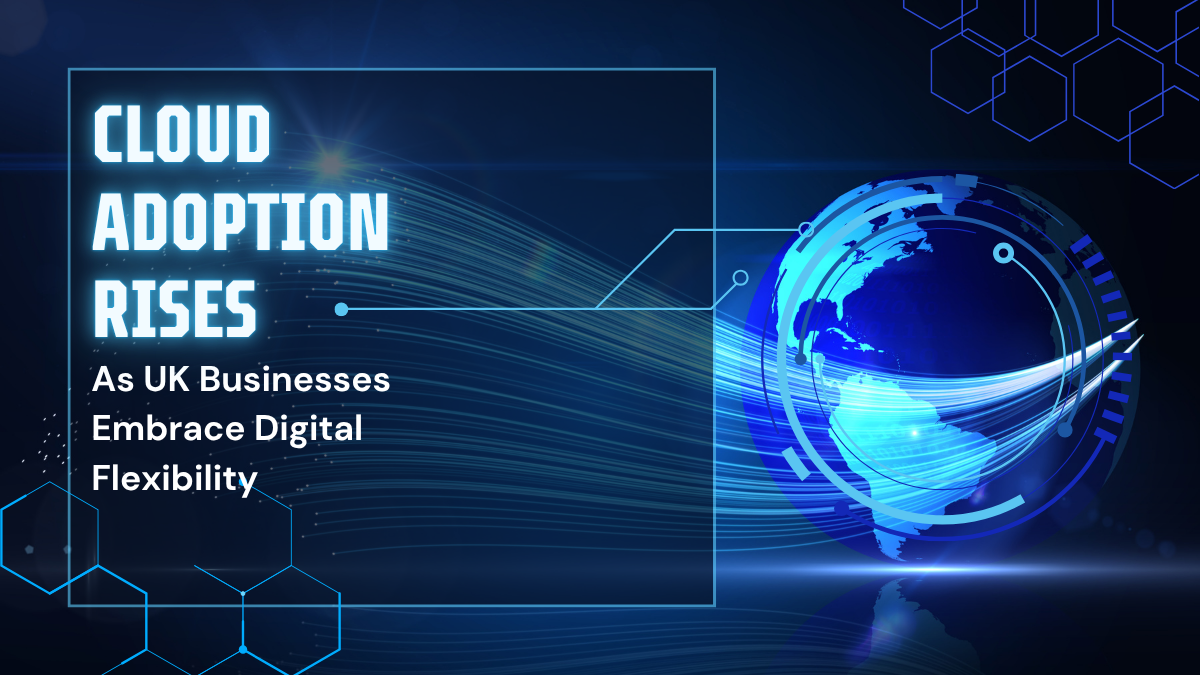ISO standards in software development exceed compliance with regulatory requirements. Software companies implement multiple ISO standards to deliver high-quality software systems that enhance client satisfaction, meet customer expectations, and integrate continuous improvement.
Recent news shows that the ISO international organisation has published 25,156 frameworks to guide different industries, and software engineering implements a few. Gain valuable insights into which ISO standards guide the acceptance criteria for superior software quality and risk mitigation.
What Are Software Development Standards?
ISO standards originate from an independent, non-government international organisation that publishes guidelines to ensure high-quality, secure, and reliable products, services, and systems. ISO standards define the best practices for software companies to improve their processes and mitigate risks.
The Importance of Meeting Regulatory Requirements
ISO standards serve as a benchmark for software engineering life cycle processes, allowing software companies to meet regulatory requirements in different industries and align software systems and applications with the best practices designed to deliver excellence and gain customer trust.
ISO standards provide a roadmap to ensure development teams build secure software systems, implement high-level coding practices, and integrate the latest data security procedures in various industries, reducing information security risks and enhancing process performance.
Benefits of Following ISO Standards in Software Development Processes
Customer expectations, ISO standards, quality management, continuous improvement, international organisation, acceptance criteria, software companies, customer satisfaction, competitive edge, quality characteristics, business operations, software application,
Understanding Common ISO Standards Regulatory Organisations
Different organisations publish ISO standards to guide the development of computer programs, source code quality assurance, and other quality characteristics. Here are the main organisations publishing ISO standards for software engineering teams to meet quality and regulatory requirements:
- ISO – International Organisation for Standardisation: Sets global software development standards.
- IEC – International Electrotechnical Commission: Updates standardisation platforms for innovation.
- IEEE – Institute of Electrical and Electronics Engineers: Sets international guidelines for IT.
- JTC – Joint Technical Committee: Consensus-based group that sets global IT standards.
The Impact of ISO Standards on Software Quality
Software companies implement ISO standards when developing computer programs, systems, and software applications to achieve the following goals:
- Guide robust processes and quality control measures to ensure reliability in software products.
- Improve usability with a user-centric approach to interface, functionality, and interaction design.
- Streamline workflows and processes to ensure efficiency among software engineering teams.
- Reduce information security risks with frameworks, testing techniques, and processes.
- Enhance quality management systems and quality assurance techniques in software companies.
- Reduce technical debt with high-level coding standards and efficient software measurement.
ISO Standards for Software Engineering Explained
Software companies should implement recommended information security procedures to reduce information security risks, streamline in-house software development standards and processes, and deliver high-quality software development projects following the main industry-specific ISO standards.
ISO/IEC 5055 – Software Quality Measurement
The ISO 5055:2021 software quality measurement framework guides software engineering teams to test the internal structure of software applications based on four categories: security, performance, maintainability, and reliability. Software companies can use it to ensure resilience and scalability.
Software companies can measure the process performance of any internal structure to determine its integrity and quality, including phonetic units, syllables, and affixes. It also provides an external audit of the application to align with quality management systems in other ISO standards.
ISO/IEC 9001 – Quality Management Systems
The ISO 9001:2015 quality management systems framework is an international standard that guides software companies to implement robust quality assurance processes, monitor customer satisfaction, and use continuous improvement in the software development lifecycle.
The framework ensures software companies use quality management systems to focus on customer expectations while using data-driven decision-making to improve efficiency throughout all design and development processes. The ultimate goal is to improve customer satisfaction and efficiency.
ISO/IEC 14143 – Software Functional Size Measurement (FSM)
The ISO 14143-1:2007 software functional size measurement framework outlines the ISO standards and FSM concept definitions in multiple parts. The development team determines the size of a software application to integrate other project management activities into the application’s processes.
Software FSM techniques include counting source code lines and use-case-based software sizing that involves counting the quality characteristics of each use case within the application. The multi-counting approach outlines the functional requirements better than counting lines alone.
ISO/IEC 20000-1 – Service Management Systems
The ISO 20000-1:2018 service management system requirements are an international standard software companies implement for effective service delivery processes that improve customer satisfaction. Software companies using the requirements ensure seamless service delivery.
Meanwhile, the development team can streamline software project management activities throughout the software development lifecycle, including assigning the appropriate roles and responsibilities to specific team members and being accountable for poor-quality service delivery.
ISO/IEC 25002 – Systems and Software Quality Requirements and Evaluation (SQuaRE)
The ISO 25002:2024 systems and software quality requirements and evaluation (SQuaRE) framework guides software engineering teams with requirements and guidelines for evaluating the caliber of quality assurance processes and quality of software products to improve customer satisfaction.
Various ISO standards aim to client contentedness. However, software engineering teams use these guidelines to evaluate various specific quality characteristics and components within software products. Developers also follow specific best practices and professional software development standards.
ISO/IEC 27001 – Information Security Management
The ISO 27001:2022 information security management systems framework is an international standard software companies implement as a strategic approach to ensuring secure coding practices and data security. Information security ISO standards streamline risk management when developing software.
Software companies must follow the ISO/IEC 27001 information security standards when developing software using sensitive customer data like financial, personal, and intellectual property. Certified software companies also reduce information security risks to comply with GDPR standards.
ISO/IEC 42001 – Artificial Intelligence Management System (AIMS)
The ISO 42001: 2023 artificial intelligence management system framework is a set of internationally recognised standards software engineering teams integrating AI must follow. It was the first international guide for implementing, managing, and maintaining AI-powered software products.
One of the latest ISO standards guides risk management, accountability, transparency, data security, and data handling in AI-related software engineering. Software companies can deliver transparent, ethical, and unbiased AI-powered solutions to clients following these ISO standards.
ISO/IEC/IEEE 12207 & ISO/IEC/IEEE 15288 – Software Life Cycle Processes
The ISO 12207:2017 software and ISO 15288:2023 system life cycle processes frameworks include internationally recognised standards that guide the development team throughout the software development lifecycle and system life cycle processes, ensuring efficiency and quality characteristics.
The ISO 12207 requirements direct software lifecycle processes in a development project, but the ISO 15288 standards guide the design of human-made systems. Systems and software can be independent, but the frameworks allow software companies to handle both simultaneously when clients require it.
ISO/IEC/IEEE 15939 – Software Measurement Processes
The ISO 15939:2017 measurement process guidelines cover another international standard software companies use to establish effective software measurement processes to measure the different activities of software products. It’s often combined with the ISO/IEC 12207 and 15288 ISO standards.
Developers can define the software measurement activities, which determines the measurement information required, how to apply static analysis, and determine whether the analysis results are valid. Software engineering teams can use different measurement processes in the life cycle.
ISO/IEC/IEEE 29119 – Software Testing
The five ISO 29119:2022 testing frameworks set the international standard for testing software products comprehensively, thoroughly, and effectively. Each ISO/IEC framework helps software companies implement effective risk mitigation in all software products using various tests.
The first two ISO standards for ISO 29119 focus on concepts and processes while the third one guides how software engineering teams document all testing methods and results. Here’s an overview of what each of the ISO standards for 29119 covers:
- ISO/IEC 29119-1: The initial document outlining software testing concepts and definitions.
- ISO/IEC 29119-2: A collection of test processes to govern and implement software testing.
- ISO/IEC 29119-3: A complete guide to test documentation with templates and requirements.
- ISO/IEC 29119-4: Approved test techniques and test design techniques for thorough testing.
- ISO/IEC 29119-5: Ideal for creating keyword-driven testing specifications in software engineering.
ISO/IEC/IEEE 90003: 2018 – Software Engineering Standards
The ISO 90003:2018 software engineering standards guide software developers in the implementation of ISO 9001 standards in a client’s software project or in-house software products. All the processes and guidelines follow the ISO standards as a point of reference in quality management systems.
The ISO standards framework ensures quality through risk mitigation, secure coding practices, and efficient software life cycle processes. Developers can ensure that a client’s project or an in-house application will meet customer expectations and regulatory requirements.
ISO/IEC JTC 1/SC 35 – User Interfaces
The ISO/IEC JTC 1/SC 35 standards provide extensive guidelines and requirements for software developers to implement during the design stage in software development processes. The set of ISO standards helps software companies design accessible and responsive interfaces.
The framework also helps software engineering designers ensure interfaces can adapt to changing cultures and languages and defines the ultimate functionality and interaction capabilities. Software companies implement the framework to create smooth application interaction and navigation.
ISO Certification Process for Software Development Companies
Software companies with ISO certification that ensure high-quality software solutions and streamlined development processes for every software project have completed the same certification process. Here is the ISO certification process that ensures development teams deliver excellent software products:
1. Conduct Internal Audits
Conduct internal audits as the first step of the ISO certification process to identify existing processes and quality procedures to understand what needs to change to receive ISO certification. Identify areas that need improvement and ISO certification readiness using internal audits.
2. Ensure Employee Training
ISO certification requires all employees (developers) to implement the frameworks and best practices. Provide employee training for any software engineers who don’t understand the ISO software development standards to achieve objectives like continuous improvement once certified.
3. Request a Management Review
Conduct internal audits to comprehend whether software engineering management teams understand quality management for ISO certification. Ask management teams to review the ISO standards and certification requirements before soliciting an external audit for ISO certification approval.
4. Solicit an External Audit
Request an external audit for ISO certification from independent auditors who will assess the company’s adherence to ISO standards and approve certification or recommend areas of improvement. The audit can also identify non-conformance issues that must be addressed before ISO certification.
5. Maintain and Renew ISO Certification
Software engineering companies must maintain and renew ISO certification every three years, allowing an auditor to assess compliance with regulatory requirements before renewing certificates. The 3-year certification cycle is a standard process to ensure software companies maintain the ISO standards.
Streamline Software Development Processes With ISO Standards at Pulsion
Client satisfaction is a pivotal objective in our software development company with ISO certification. Our clients and case studies provide valuable insights into our tailoring process. Our dedicated software development team understands how to integrate all of the ISO software development standards.
Pulsion software development for startups services are tailored to meet the unique needs of new businesses.
Our teams meet customer expectations, implement risk management, and ensure the highest software quality levels following the relevant software development standards. Learn more about us to see how we’ve served multiple industries for 30 years, or contact us to discuss industry-relevant ISO standards.
Software Engineering Standards Conclusion
Implementing international software engineering standards ensures quality, security, and satisfaction. Each of the ISO standards impacts different areas of software and product development. Partner with a custom software development company that follows the ISO standards religiously to ensure success.
Software Development Standards FAQs
What are the best practices for following ISO/IEC software engineering standards?
Developing software systems with a quality guarantee and streamlining development processes using ISO standards to meet customer expectations requires software developers to follow best practices:
- Reducing code complexity for clean, efficient source code.
- Testing automation for full test coverage.
- Frequent code auditing for continuous improvement.
- Limited batch source code deployment for test efficiency.
- Stringent version control to track and monitor changes.
- Feature flags for new features for effective change management.
- Automated deployment and integration for fast but reliable software engineering.
Does Pulsion implement ISO/IEC software engineering standards?
Yes, Pulsion has ISO certification to streamline software engineering and deliver high-quality software solutions, whether using information security frameworks or keyword-driven testing techniques. We integrate all the necessary software development standards to deliver excellence in every software application, and all of our software development projects receive the same attention and ISO standards.
Which ISO standard is the most important in software engineering?
Reliable, efficient, secure, and high-quality software systems require software engineering teams to implement all of the ISO-approved software development standards, including the ISO/IEC 27001 framework to decrease information security risks and the 9001 quality management guidelines.
Does ISO have industry-specific standards?
ISO standards include a range of industry-specific standards for various industries to manage information security risks, industrial processes, and energy management systems. For example, the ISO 50001 framework guides software companies in the development of energy management software. Contact us to discuss different industries and which ISO standards may apply.
















